- Understanding the Impact
- Effects on Strawberry Growth
- Common Types of Nematodes
- Management Techniques
- Conclusion
- The Role of Nematodes in Strawberry Growth
- Benefits of Nematodes
- Negative Impact of Nematodes
- Management Strategies
- The Negative Effects of Nematode Infestation
- 1. Stunted Growth
- 2. Decreased Yield
- 3. Nutrient Deficiency
- 4. Reduced Plant Resistance
- 5. Economic Loss
- Identifying Nematode Infestation
- 1. Stunted Growth
- 2. Yellowing Leaves
- 3. Root Damage
- 4. Wilting and Plant Decline
- 5. Soil Sampling and Laboratory Analysis
- Signs and Symptoms
- Tools for Diagnosis
- Preventing and Managing Nematode Infestations
- 1. Crop Rotation
- 2. Soil Solarization
- 3. Bed Preparation
- 4. Resistant Strawberry Varieties
- 5. Biocontrol Agents
- 6. Nematode-Free Transplants
- 7. Soil Testing
- 8. Chemical Control
- Cultural Practices to Minimize Nematode Problems
- 1. Crop Rotation
- 2. Soil Solarization
- 3. Sanitation
- 4. Weed Control
- 5. Soil Amendments
- 6. Irrigation Practices
- 7. Biological Control
- Soil Amendments and Biopesticides for Nematode Control
- 1. Nematode-Resistant Varieties
- 2. Organic Matter Amendments
- 3. Biofumigation
- 4. Nematode-Targeting Biopesticides
- 5. Crop Rotation and Fallowing
- 6. Soil Solarization
- Choosing Resistant Strawberry Varieties
- 1. Research available varieties
- 2. Consider nematode species
- 3. Evaluate yield and quality
- 4. Consider other pest resistance
- 5. Trial different varieties
- Question-answer:
- What are nematodes?
- How do nematodes affect strawberry growth?
- What are some signs of nematode infestation in strawberry plants?
- Are there any natural ways to control nematodes in strawberry plants?
- Can chemical pesticides be used to control nematodes?
- How can I prevent nematode infestation in my strawberry plants?
- Where can I purchase nematode-resistant strawberry varieties?
- Video: Most people don’t know this about Growing Strawberries
Strawberries are a popular fruit that can be grown in a variety of climates. However, one of the biggest challenges faced by strawberry growers is nematode infestation. Nematodes are microscopic roundworms that live in the soil and can cause significant damage to strawberry plants. They feed on the roots, stunting growth and reducing yields. In order to improve strawberry growth and minimize the impact of nematodes, growers need to implement proactive measures.
There are several strategies that can be utilized to improve strawberry growth in the presence of nematodes. One effective method is crop rotation. By planting different crops in the same area, nematode populations can be reduced as they are deprived of their preferred host plant. This allows the soil to recover and reduces the risk of nematode infestation in subsequent strawberry crops.
Another strategy is the use of resistant strawberry varieties. Some strawberry cultivars have been bred to be resistant to certain types of nematodes. By planting these resistant varieties, growers can significantly reduce nematode damage and promote healthier strawberry plants. It is important for growers to research and select the appropriate resistant varieties for their specific nematode problem.
“Applying organic matter, such as compost or manure, can also improve strawberry growth and reduce nematode populations.”
Furthermore, soil management practices play a crucial role in improving strawberry growth. Nematodes thrive in compacted soils, so improving soil aeration and drainage can help reduce nematode populations. Applying organic matter, such as compost or manure, can also improve strawberry growth and reduce nematode populations. Organic matter enhances soil structure and promotes beneficial soil organisms that can help control nematodes.
In conclusion, nematodes can be a significant challenge for strawberry growers, but there are several strategies that can be employed to improve strawberry growth. Crop rotation, planting resistant varieties, and implementing proper soil management practices are key to minimizing nematode damage and maximizing yields. By being proactive and implementing these strategies, growers can ensure healthier and more productive strawberry plants.
Understanding the Impact
Nematodes are microscopic roundworms that can have a significant impact on the growth and productivity of strawberry plants. They are found in the soil and can feed on plant roots, causing damage to the plant and reducing its ability to take up water and nutrients.
Effects on Strawberry Growth
When nematodes infest strawberry plants, they can cause a range of detrimental effects. These include stunted growth, smaller fruit size, reduced yield, and lower quality berries. The damage caused by nematodes can also make strawberry plants more susceptible to other diseases and pests.
One of the key reasons why nematodes can have such a significant impact on strawberry growth is their ability to reproduce rapidly. Female nematodes can lay hundreds of eggs, leading to increased populations and greater damage to the plants over time.
Common Types of Nematodes
There are several different species of nematodes that can affect strawberry plants, with the most common ones being root-knot nematodes (Meloidogyne spp.) and lesion nematodes (Pratylenchus spp.).
- Root-Knot Nematodes: These nematodes cause swelling and galls on the roots of strawberry plants, disrupting the plant’s ability to take up water and nutrients. They are particularly damaging in sandy soils.
- Lesion Nematodes: Lesion nematodes feed on the roots and can cause necrotic lesions, which can further increase the susceptibility of the plant to diseases and other stresses.
Management Techniques
Managing nematode populations is crucial for maintaining healthy strawberry plants. There are several strategies that can be used to reduce nematode damage:
- Crop rotation: Growing non-host crops, such as corn or beans, can help reduce nematode populations in the soil.
- Nematicide application: Chemical nematicides can be applied to control nematode populations, although these should be used judiciously and following proper safety guidelines.
- Soil solarization: This technique involves covering the soil with clear plastic to heat it up, effectively killing nematodes and other soil-borne pathogens.
- Biological control: Some beneficial organisms, such as certain fungi or bacteria, can help suppress nematode populations naturally.
Conclusion

Nematodes can have a significant impact on strawberry plants, leading to stunted growth, reduced yield, and lower quality fruit. Understanding the effects of nematodes and implementing effective management techniques is crucial for ensuring the health and productivity of strawberry crops.
The Role of Nematodes in Strawberry Growth
Nematodes are microscopic worms that can have both positive and negative effects on strawberry growth. These tiny organisms can play a crucial role in the health and productivity of strawberry plants.
Benefits of Nematodes
- Soil aeration: Nematodes help in improving soil structure by creating tunnels as they move through the soil. These tunnels create channels for air and water to circulate, promoting healthy root development and nutrient absorption.
- Organic matter decomposition: Some nematodes feed on organic matter, breaking it down into smaller particles that are easier for plants to absorb. This helps in releasing essential nutrients and enhances soil fertility.
- Predation of pests: Certain beneficial nematodes are natural predators of harmful pests, such as root-feeding insects and larvae. They attack and consume these pests, reducing their population and protecting strawberry plants from damage.
Negative Impact of Nematodes
However, not all nematodes are beneficial for strawberry growth. Some types of nematodes can be detrimental to the plants and cause significant damage.
- Root damage: Certain nematode species feed on the roots of strawberry plants, causing stunted growth, wilting, and reduced yields. These nematodes can penetrate the root tissues, leading to the formation of galls and disrupting the plant’s nutrient uptake.
- Disease transmission: Some nematodes act as vectors for plant diseases, such as viruses and fungal pathogens. They can transmit these harmful microorganisms from one plant to another, spreading diseases that negatively impact strawberry growth and productivity.
Management Strategies
To ensure the healthy growth of strawberry plants, it is essential to manage nematode populations effectively. Here are some strategies that can help:
- Crop rotation: By rotating strawberry crops with non-host plants, nematode populations can be reduced. Nematodes that depend on strawberries as a food source will eventually die off in the absence of host plants.
- Resistant varieties: Planting strawberry varieties that are resistant to specific nematode species can prevent or minimize damage. These resistant varieties have been specifically bred to withstand nematode attacks.
- Biological control: Introducing beneficial nematodes or other biological control organisms that prey on harmful nematodes can help manage their populations and reduce damage to strawberry plants.
- Sanitation practices: Proper sanitation, such as removing and destroying infected plant debris, can prevent the spread of nematodes and associated diseases.
- Chemical treatments: In severe cases, chemical nematicides may be used as a last resort to control nematode populations. However, caution must be exercised to minimize environmental impact and ensure the safety of both plants and humans.
By understanding the role of nematodes in strawberry growth and implementing appropriate management strategies, growers can ensure the health and productivity of their strawberry crops.
The Negative Effects of Nematode Infestation
Nematodes are microscopic worm-like organisms that can cause significant damage to strawberry plants. Their infestation can have several negative effects on strawberry growth and overall crop yields.
1. Stunted Growth
Nematodes feed on the roots of strawberry plants, causing damage to the root system. This damage leads to stunted growth and reduced vigor in the plants. The roots become less efficient in absorbing water and nutrients from the soil, resulting in poor overall plant development.
2. Decreased Yield
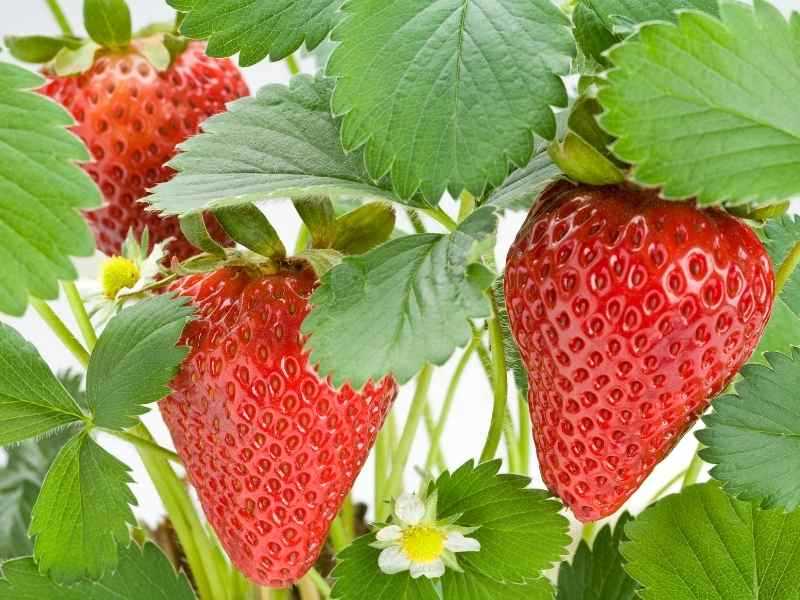
Nematode-infested strawberry plants often exhibit a decrease in yield. The damaged roots are unable to support the adequate growth of fruit-bearing stems, leading to a lower number of blossoms and subsequently a reduced number of strawberries produced.
3. Nutrient Deficiency
As nematodes feed on the roots, they cause physical damage and create entry points for fungal and bacterial pathogens. These pathogens can further exacerbate the damage and make it difficult for the plant to absorb nutrients from the soil. The combination of nematode feeding and secondary infections can lead to nutrient deficiencies in the strawberry plants, affecting their overall health and productivity.
4. Reduced Plant Resistance
Nematode infestation weakens the overall defense mechanism of strawberry plants. The damage caused by nematode feeding makes the plants more susceptible to other pests, diseases, and environmental stresses. This reduced resistance can further impact the plant’s ability to grow and produce healthy strawberries.
5. Economic Loss
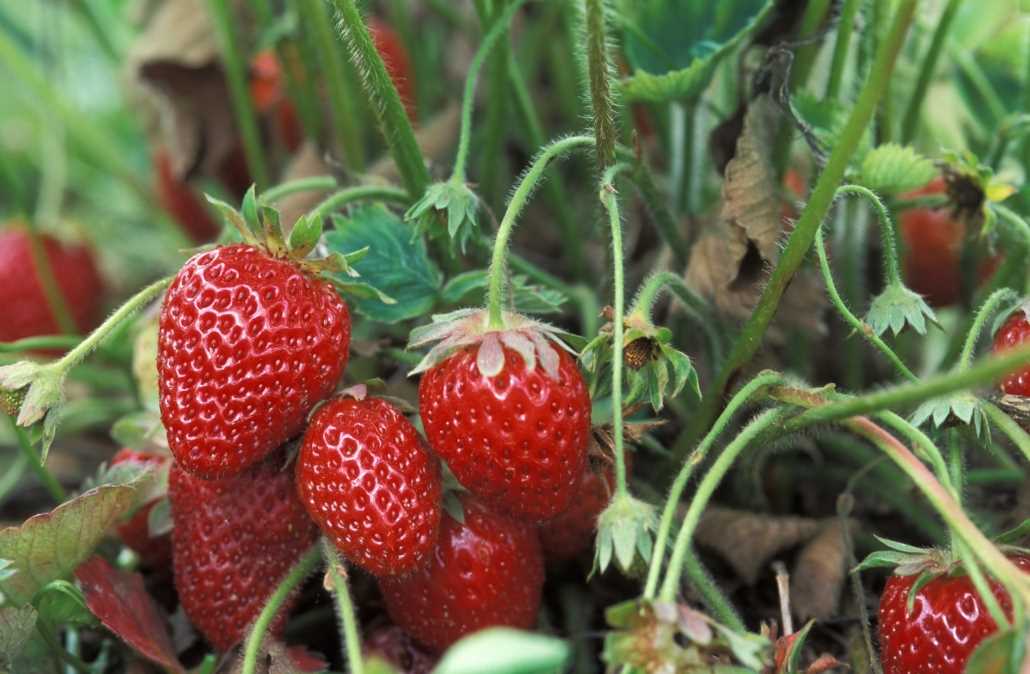
Nematode infestation can result in significant economic loss for strawberry farmers. The reduced yield and poor fruit quality can negatively impact the market value of the crop. Additionally, the cost of managing nematode populations through various control methods, such as soil fumigation or crop rotation, adds to the overall expenses incurred by farmers.
Overall, nematode infestation poses a serious threat to strawberry growth and productivity. Implementing preventive measures and adopting nematode management strategies are essential for ensuring healthy strawberry crops and maximizing yields.
Identifying Nematode Infestation
Nematodes are microscopic roundworms that can infest the soil and attack the roots of strawberry plants. Identifying nematode infestation is essential for effectively managing this pest and preventing damage to the crop. Here are some signs to look for:
1. Stunted Growth
One of the first indicators of nematode infestation is stunted growth in strawberry plants. Nematodes feed on the roots, inhibiting their ability to take up nutrients and water. This results in stunted growth, where plants may appear smaller than healthy ones.
2. Yellowing Leaves
Nematode-infested plants often develop yellowing leaves. This is because the damaged roots cannot efficiently deliver nutrients to the foliage, leading to nutrient deficiencies and chlorosis.
3. Root Damage
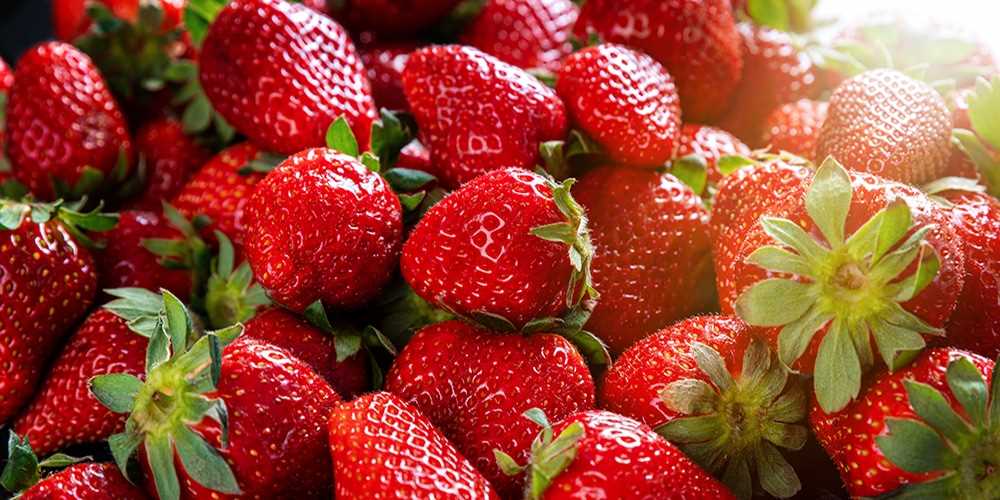
Inspecting the roots can provide direct evidence of nematode infestation. Nematodes typically cause swelling or galls to form on the roots. These galls disrupt the normal functioning of the roots, further compromising the plant’s ability to uptake essential resources.
Additionally, nematodes leave characteristic marks on the roots, which can vary depending on the species. These marks can resemble knots, lesions, or even fine scars. Careful observation of the roots under a microscope can help identify these distinct patterns.
4. Wilting and Plant Decline
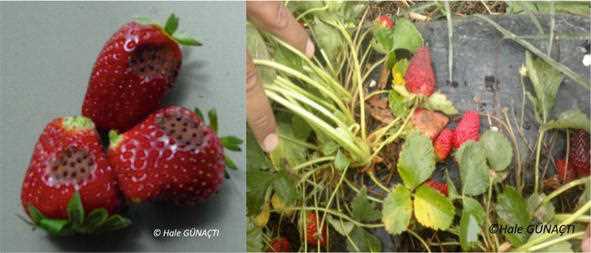
Prolonged nematode infestation can lead to wilting and eventual decline of strawberry plants. As the roots continue to be damaged, the plants become increasingly stressed and unable to support proper growth. This can eventually result in the death of the plants.
5. Soil Sampling and Laboratory Analysis
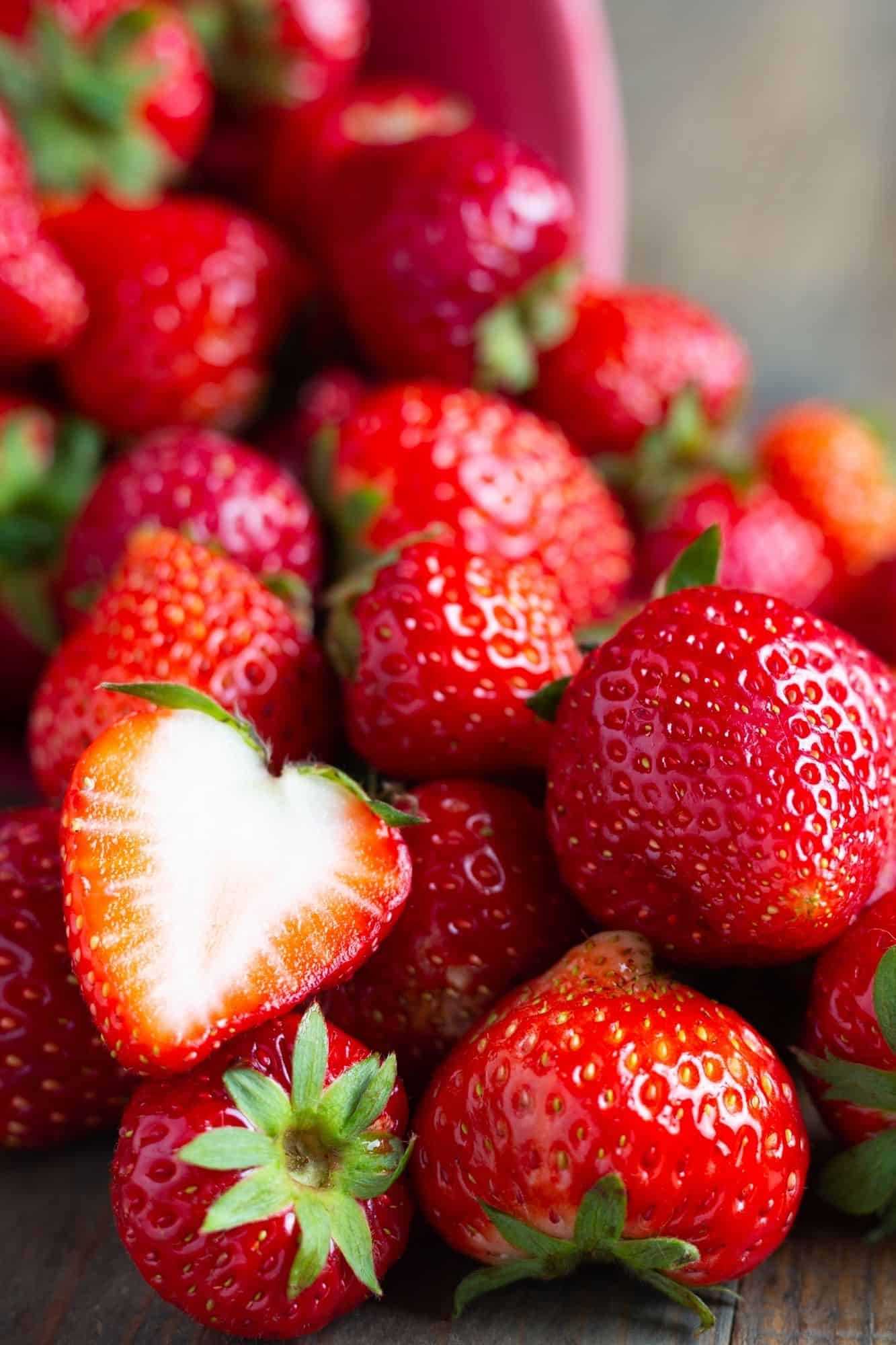
To accurately confirm nematode infestation, it is recommended to take soil samples from the strawberry field and send them to a laboratory for analysis. Soil analysis identifies the presence of nematodes and helps determine the severity of the infestation. This information can guide the appropriate management strategies for tackling the nematode problem.
Overall, early detection of nematode infestation is crucial for implementing an effective management plan. Regular monitoring, visual inspection, and proper soil analysis are important tools in identifying and managing nematodes in strawberry production.
Signs and Symptoms
The presence of nematodes in strawberry plants can cause various signs and symptoms, indicating their infestation. It is important for strawberry growers to be able to recognize these signs and symptoms to take necessary actions to control the nematode population. Here are some common signs and symptoms of nematode infestation in strawberry plants:
Stunted growth: Strawberry plants affected by nematodes often exhibit stunted growth, with shorter and smaller leaves compared to healthy plants. This stunted growth can significantly impact the yield and quality of the strawberries.
Root damage: Nematodes feed on the root system of strawberry plants, causing damage to the roots. Infested roots may appear discolored, swollen, or show signs of rotting. Severely damaged roots can reduce the plant’s ability to absorb water and nutrients, leading to further decline in plant health.
Yellowing and wilting: Infested strawberry plants often show signs of yellowing and wilting, especially in their older leaves. This yellowing may start at the tips or edges of the leaves and gradually spread throughout the plant. As the nematodes continue to feed on the roots, the plants may further wilt and eventually die.
Galled roots: Certain nematode species can cause the formation of galls on the roots of strawberry plants. Galls are abnormal swellings or growths that occur in response to the nematode’s feeding activities. These galls can disrupt the normal function of the roots and impair the overall growth and development of the plant.
Reduced fruit yield: Nematode infestation can significantly reduce the fruit yield of strawberry plants. Infested plants may produce fewer and smaller strawberries compared to healthy plants. In severe cases, the quality of the strawberries may also be affected, with deformities or discolorations.
If you observe any of these signs and symptoms in your strawberry plants, it is important to take action promptly to prevent further damage. Proper management practices, such as soil sanitation, crop rotation, and the use of resistant cultivars, can help control nematode populations and promote healthy strawberry growth.
Tools for Diagnosis
- Visual Inspection: Examining the plant’s roots for the presence of nematodes can provide a basic indication of their presence. However, visual inspection alone may not be sufficient as nematodes can be difficult to detect with the naked eye.
- Soil Sampling: Collecting soil samples from different areas of the field and sending them to a laboratory for analysis can help determine the nematode population density. Soil samples can be taken using a soil probe or a shovel. The samples should be collected at a consistent depth and should include the root zone of the plants.
- Nematode Extraction: The soil samples collected can be processed using various extraction techniques to isolate and quantify nematodes present. This can be done by using a soil sieve, centrifuge, or funnel and filter paper method.
- Nematode Identification: Once nematodes have been extracted, they can be identified under a microscope using morphological and molecular techniques. Morphological identification involves examining the nematodes’ physical characteristics, such as shape, size, and color. Molecular techniques, such as DNA sequencing, can provide more accurate identification.
- PCR Testing: Polymerase Chain Reaction (PCR) is a technique used to detect the presence of specific nematode species or genera in soil or plant samples. This technique amplifies the nematode DNA, allowing for their identification and quantification.
- Root Health Assessment: Assessing the health of the strawberry plants’ roots can also provide indirect evidence of nematode infestation. Nematodes typically cause root damage, leading to symptoms such as stunted growth, discoloration, and reduced root mass.
- Leaf Symptom Evaluation: Observing the leaves of the strawberry plants can help identify symptoms associated with nematode infestation, such as chlorosis, yellowing, wilting, and leaf deformities. However, leaf symptoms can also be caused by other factors, so it is important to consider other diagnostic tools as well.
- Crop Rotation History: Keeping track of the previous crops grown in the field can provide valuable information on the likelihood of nematode infestation. Certain crops, such as legumes, can increase nematode populations, while others may have a suppressive effect.
In conclusion, a combination of visual inspection, soil sampling, nematode extraction, identification techniques, PCR testing, root health assessment, leaf symptom evaluation, and crop rotation history can be used to diagnose nematode infestation in strawberry plants. Consulting with agricultural experts and nematode specialists can further enhance the accuracy of diagnosis and guide the selection of appropriate management strategies.
Preventing and Managing Nematode Infestations
Nematode infestations can significantly impact the growth and health of strawberry plants. It is important to take preventative measures and implement management strategies to control nematode populations. Here are some effective ways to prevent and manage nematode infestations:
1. Crop Rotation
Rotate strawberry beds with crops that are not susceptible to nematode infestations, such as corn or beans. This helps break the nematode’s life cycle by depriving them of a suitable host plant.
2. Soil Solarization
Soil solarization is an effective method that uses solar heat to kill nematodes and other soil-borne pathogens. Cover the strawberry bed with clear plastic during the hot summer months to trap heat and raise the soil temperature to lethal levels for nematodes.
3. Bed Preparation
Proper bed preparation is essential to minimize nematode infestations. Remove any residual plant debris and weeds from the previous crop to reduce nematode populations. Avoid overwatering and improve drainage to discourage nematodes from establishing in the soil.
4. Resistant Strawberry Varieties
Choose strawberry varieties that are known to be resistant or tolerant to nematodes. These varieties have genetic traits that make them less susceptible to nematode damage.
5. Biocontrol Agents
Introduce beneficial nematodes or other biocontrol agents that prey on plant-parasitic nematodes. These natural enemies can help reduce nematode populations and suppress their activity.
6. Nematode-Free Transplants
Ensure that strawberry transplants are free of nematodes before planting. Check the roots of transplants for any signs of nematode infection or damage.
7. Soil Testing
Regularly test the soil for nematode populations to monitor their presence and populations. This helps in implementing appropriate management strategies and evaluating the effectiveness of control measures.
8. Chemical Control
If nematode populations become significant despite preventative measures, chemical control options may be necessary. Consult with a local agricultural extension office or a professional for recommendations on nematode-specific pesticides.
By implementing these preventative measures and management strategies, strawberry growers can effectively prevent and manage nematode infestations, ensuring healthier and more productive strawberry crops.
Cultural Practices to Minimize Nematode Problems
1. Crop Rotation
One effective cultural practice to minimize nematode problems in strawberries is crop rotation. Rotating strawberries with non-host crops, such as corn, beans, or lettuce, can help break the nematode life cycle and reduce nematode populations in the soil. It is recommended to avoid planting strawberries in the same area for at least 3 years after an infestation to allow time for nematode populations to decline.
2. Soil Solarization
Soil solarization is a technique that uses heat from the sun to kill nematodes and other soil pests. To practice soil solarization, cover the soil with a clear, plastic tarp during the hot summer months. The plastic traps the heat from the sun, raising the soil temperature and killing nematodes and other pests. This method is most effective in areas with high temperatures and intense sunlight.
3. Sanitation
Proper sanitation practices can help reduce the spread of nematodes in the garden. Remove and destroy any infected plant material, including roots and runners, to prevent nematodes from spreading to healthy plants. Clean and disinfect gardening tools, equipment, and containers to eliminate any nematodes that may be present.
4. Weed Control
Weeds can serve as alternative hosts for nematodes and increase nematode populations. Implementing effective weed control measures, such as hand pulling or mulching, can help minimize nematode problems in strawberries. Regularly inspect the garden for weeds and remove them promptly to prevent nematode infestations.
5. Soil Amendments
Applying organic matter, such as compost or green manure, to the soil can improve soil health and suppress nematode populations. Organic matter enhances soil structure, fertility, and water-holding capacity, creating a more favorable environment for beneficial soil organisms that can help control nematodes. In addition, incorporating nematode-resistant plant varieties into the strawberry planting can also be beneficial.
6. Irrigation Practices
Avoid over-irrigating strawberries, as excessive moisture can create favorable conditions for nematodes. Nematodes thrive in damp soil, so it is important to practice proper irrigation techniques. Monitor soil moisture levels regularly and only irrigate when necessary, ensuring proper drainage to prevent waterlogged conditions.
7. Biological Control
Biological control involves using beneficial organisms to reduce nematode populations. Certain nematode-antagonistic fungi and bacteria can help control nematodes in the soil. These organisms can be introduced through organic amendments or biocontrol products. Consult with local agricultural extension services or experts for recommendations on using biological control methods for nematode management.
By implementing these cultural practices, strawberry growers can minimize nematode problems and promote healthy strawberry growth.
Soil Amendments and Biopesticides for Nematode Control
Managing nematodes in strawberry plants can be challenging, but there are several soil amendments and biopesticides that can help control their population and improve plant growth. These products work by either repelling or killing nematodes, reducing their numbers in the soil.
1. Nematode-Resistant Varieties
One of the most effective ways to control nematodes is to plant nematode-resistant strawberry varieties. These varieties have been bred to have natural resistance to nematode infestations. By planting resistant varieties, growers can significantly reduce nematode populations in the soil without the need for additional chemical treatments.
2. Organic Matter Amendments
Adding organic matter to the soil can help suppress nematode populations. Organic matter, such as compost or well-rotted manure, improves soil structure, enhances beneficial microbial activity, and can decrease the survival and reproduction of nematodes.
When incorporating organic matter into the soil, it is important to ensure it is thoroughly decomposed to prevent the introduction of weed seeds or pathogens. Applying organic matter in the form of a mulch around the strawberry plants can also provide some level of nematode control.
3. Biofumigation
Biofumigation is a natural pest control method that utilizes specific plants or their extracts to release natural compounds that are toxic to nematodes. This technique involves growing biofumigant crops, such as mustard or marigold, and then incorporating them into the soil.
As the biofumigant crops decompose, they release compounds called isothiocyanates, which have nematode-suppressive properties. Incorporating biofumigant crops into the soil can disrupt nematode life cycles and reduce their population.
4. Nematode-Targeting Biopesticides
Nematode-targeting biopesticides, such as biological control agents and microbial-based products, can be used to directly target nematodes in the soil. These products contain beneficial organisms, such as certain fungi, bacteria, or nematodes themselves, that can infect or parasitize nematodes, reducing their numbers.
Some biopesticides can be applied as soil drenches, while others are best suited for seed treatments or foliar sprays. It is important to carefully follow the product instructions to ensure effective control and minimize any potential harm to non-target organisms.
5. Crop Rotation and Fallowing
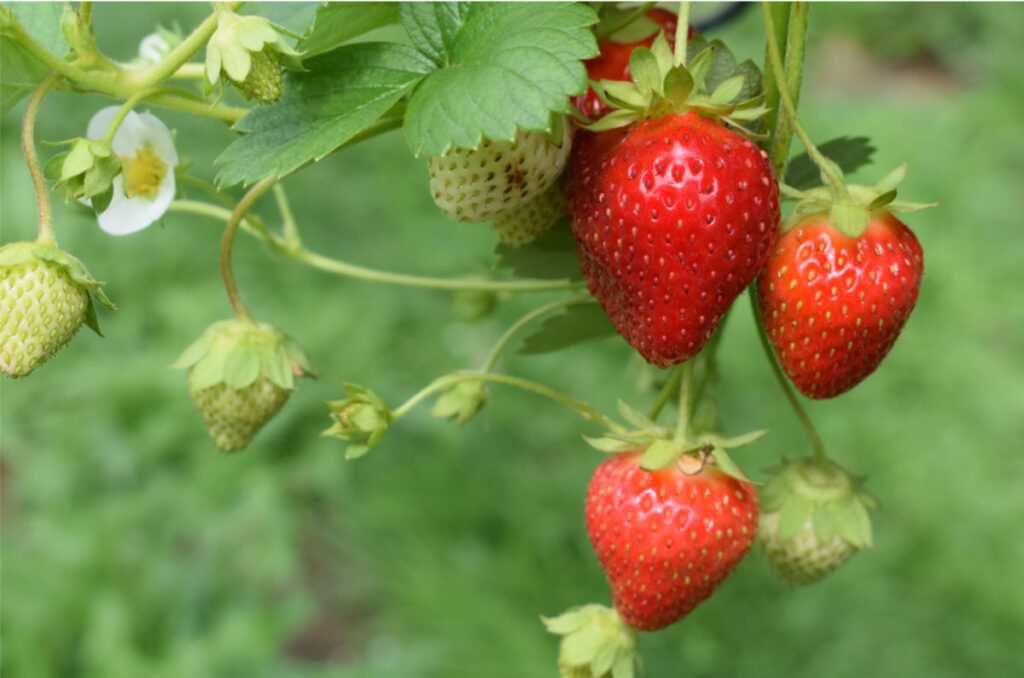
Implementing a crop rotation or fallowing period can help break the nematode life cycle and reduce their population in the soil. By planting non-host crops for a season or more, nematodes that rely on strawberry plants as their primary food source will starve and decline in numbers.
Crop rotation strategies should involve planting crops that are not susceptible to the same nematode species. This can help prevent the buildup of nematode populations and ensure the long-term success of strawberry production.
6. Soil Solarization
Soil solarization is a technique that uses sunlight to heat the soil and kill nematodes and other soil-borne pests. This process involves covering the soil with a transparent plastic sheet, which traps solar energy and raises the soil temperature to lethal levels for nematodes.
To effectively solarize the soil, it is important to choose a period of high solar radiation and maintain the plastic cover in place for several weeks. This method can be especially useful in regions with warm and sunny climates.
| Method | Potential Products |
|---|---|
| Nematode-Resistant Varieties | Variety A, Variety B, Variety C |
| Organic Matter Amendments | Compost, Well-rotted Manure |
| Biofumigation | Mustard, Marigold |
| Nematode-Targeting Biopesticides | Biological Control Agent X, Microbial-Based Product Y |
| Crop Rotation and Fallowing | Non-host crop 1, Non-host crop 2 |
| Soil Solarization | Transparent Plastic Sheet |
It is important to note that nematode control strategies may vary depending on the specific nematode species present in the soil. Consult with local agricultural extension services or nematology experts for specific recommendations and the most up-to-date information.
Choosing Resistant Strawberry Varieties
One of the most effective ways to control nematode damage in strawberries is by choosing resistant varieties. Resistant varieties have the ability to withstand nematode damage and can minimize the negative effects on yield and plant health. When selecting strawberry varieties, it is important to consider their resistance to nematodes.
1. Research available varieties
Before making a decision, it is important to conduct thorough research on the varieties available in your area. Check with local nurseries, agricultural extension offices, and online resources to gather information on the nematode resistance of each variety. Look for varieties that have been specifically bred or selected for nematode resistance.
2. Consider nematode species
Different strawberry varieties may have varying degrees of resistance to different nematode species. It is important to consider the predominant nematode species in your area and choose varieties that are resistant to those specific nematodes. This information can be obtained through soil testing or by consulting with local experts.
3. Evaluate yield and quality
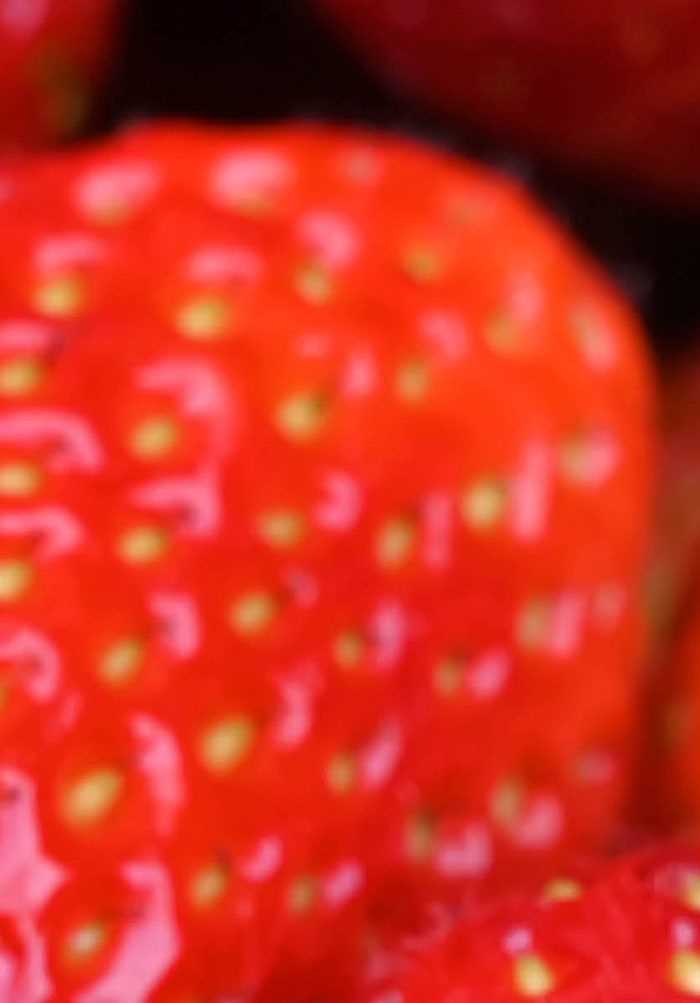
While nematode resistance is a crucial factor to consider, it is also important to evaluate the yield and quality of the strawberry varieties. Look for varieties that not only have nematode resistance but also have desirable fruit characteristics, such as taste, size, and shelf life. Balancing nematode resistance with overall plant performance can help ensure a successful strawberry crop.
4. Consider other pest resistance
Strawberry varieties that are resistant to nematodes may also have resistance to other pests and diseases. Consider selecting varieties that offer resistance to multiple pests, as this can further enhance the crop’s overall health and productivity. It is advisable to consult with local experts or extension offices to identify varieties that have resistance to nematodes as well as other common strawberry pests.
5. Trial different varieties
It can be beneficial to trial different nematode-resistant strawberry varieties on a small scale before committing to a large planting. By testing different varieties, you can assess their performance and determine which ones thrive in your specific growing conditions. This can help you make more informed decisions when selecting strawberry varieties for future plantings.
By following these guidelines and selecting nematode-resistant strawberry varieties, growers can effectively manage nematode damage and ensure the success of their strawberry crops.
Question-answer:
What are nematodes?
Nematodes are tiny roundworms that can be found in soil. They can be parasitic or free-living, and they can be beneficial or harmful to plants.
How do nematodes affect strawberry growth?
Nematodes can cause damage to the roots of strawberry plants, leading to stunted growth, decreased yield, and increased susceptibility to other diseases and pests.
What are some signs of nematode infestation in strawberry plants?
Signs of nematode infestation in strawberry plants may include wilting, yellowing leaves, stunted growth, and root damage.
Are there any natural ways to control nematodes in strawberry plants?
Yes, there are natural ways to control nematodes in strawberry plants. Some methods include crop rotation, using nematode-resistant varieties, and incorporating organic matter into the soil.
Can chemical pesticides be used to control nematodes?
Yes, chemical pesticides can be used to control nematodes in strawberry plants. However, it is important to choose a pesticide that is labeled for nematode control and to follow the instructions carefully.
How can I prevent nematode infestation in my strawberry plants?
To prevent nematode infestation in your strawberry plants, you can practice good crop rotation, avoid overwatering, remove and destroy infected plants, and keep the soil healthy and well-drained.
Where can I purchase nematode-resistant strawberry varieties?
You can purchase nematode-resistant strawberry varieties from various nurseries and seed suppliers. It is important to choose varieties that are specifically bred to be resistant to nematodes.







